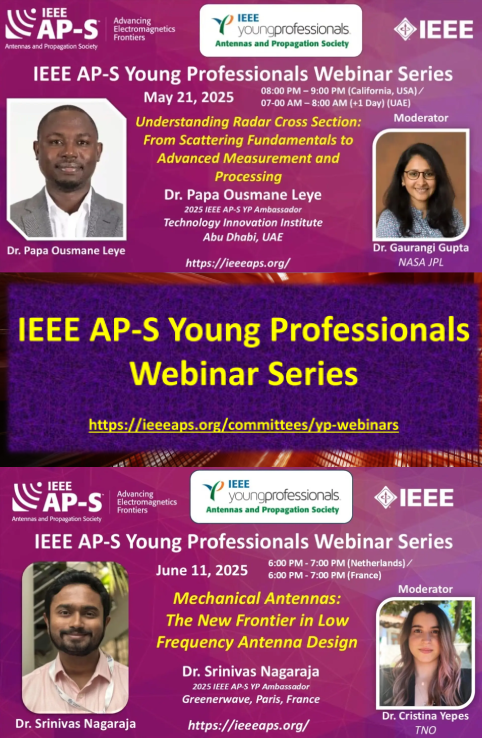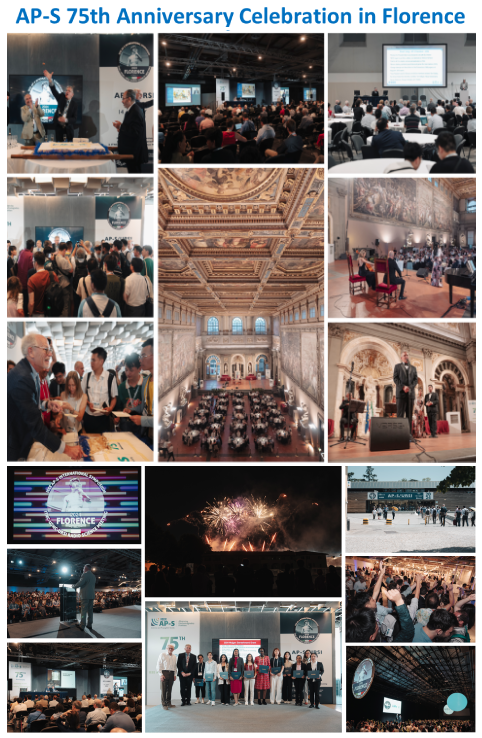
Dr. Marta Martínez Vázquez
Department of Antennas & EM Modelling, IMST GmbH
Carl-Friedrich-Gauss-Str. 2-4
47475 Kamp-Lintfort, Germany
Marta Martínez-Vázquez was born in Santiago de Compostela, Spain, in 1973. She obtained the Dipl.-Ing. in telecommunications and Ph.D. degree from Universidad Politécnica de Valencia, Spain, in 1997 and 2003, respectively. In 1999 she obtained a fellowship from the Pedro Barrié de la Maza Foundation for postgraduate research at IMST GmbH, in Germany. Since 2000, she is a full-time staff member of the Antennas and EM Modelling department of IMST. Her research interests include the design and applications of antennas for mobile communications, planar arrays and radar sensors, as well as Electromagnetic Bandgap (EBG) materials. Dr. Martínez-Vázquez was awarded the 2004 "Premio Extraordinario de Tesis Doctoral" (Best Ph.D. award) of the Universidad Politécnica de Valencia for her dissertation on small multiband antennas for handheld terminals. She has been a member of the Executive Board of the ACE (Antennas Centre of Excellence) Network of Excellence (2004-2007) and the leader of its activity on small antennas.
She is the vice-chair of the COST IC0306 Action “Antenna Sensors and Systems for Information Society Technologies”, and a member of the IEEE Antennas and Propagation Society and of the Technical Advisory Panel for the Antennas and Propagation Professional Network of IET. She is the author of over 50 papers in journals and conference proceedings. Dr. Martínez-Vázquez’s career is an example of the positive results of such coordination programs. She started as an expert participant in COST 260, became a Working Group leader in COST 284, and a member of the Executive Board of ACA, leading the “Small Antennas” activity. Presently, she is the Vice-chair of the COST IC0603 Action.
Challenges in practical design of planar arrays
The development of new multimedia services and intelligent sensor systems is progressing at a rapid pace and requires the use of agile antenna frontends that are compact, highly efficient and cost-effective. These antennas are rarely off-the-shelf solutions. On the contrary, custom-tailored solutions are usually required in order to optimise the performance, and facilitate the integration into the final product.
In many applications, the best compromise for an antenna solution with respect to cost and performance is a planar array. In general, a planar array can be defined as an antenna in which all of the elements are situated in one plane. The antenna elements themselves can be patches or other planar or buried structures. The range of applications of planar arrays include agile RF-frontends for mobile satellite terminals, radar systems for automotive and security applications, and millimetre wave point-to-point or point-to-multipoint radio links for multimedia wireless networks.
Real-life communications systems can include antenna arrays with only a limited number of transmitters and receivers as well as very large arrays with hundreds of receive and transmit channels. A skilful symbiosis of industrial development and innovative research projects is the key to provide cost-effective products. Some typical applications will be described in the next sections.
Considerable experience is required for the design and realisation of planar antenna arrays at microwave frequencies, especially when broadband solutions are demanded. It is not only necessary to develop innovative concepts beyond the standard patch design, but it also becomes unavoidable to cope with material and manufacturing tolerances when realising the antennas on soft and hard substrates. Special care has also to be invested in the RF-feeding network and the transition between antenna and RF-circuitry, as the latter can become a bottleneck at high frequencies, hence limiting the available bandwidth.
In order to provide cutting-edge solutions, it is important not only to develop systems based on state-of-the art antenna concepts. Fast and highly accurate EM solvers are indispensable tools to simulate the whole antenna system. Access to prototyping tools and accurate measurement facilities are also required. The seamless integration of all these services helps reduce the number of iterations to obtain high-performance antennas, thus leading to reduced development time. A complete, industrial solution for complex planar arrays must cover the whole development chain, starting with the conceptual design and the development of new concepts and solutions, going through the prototyping and optimisation process, including antenna characterisation and diagnosis, up to the preparation of line production and qualification phase. Some of the key steps will be discussed in this talk.
An overview of European cooperation on antenna research
Antenna research has a long tradition in Europe, although the efforts have been often scattered and uncoordinated, with a large gap between university research and industrial applications. A first step towards collaborative research was made with the creation of the COST activities, also referred to as an Action (“CO-operation in the field of Scientific and Technological research”), sponsored by the European Commission. Under the COST umbrella, different Actions were approved since the early 1970s that deal with antenna R&D. From the first COST Action 25/1 ("Aerial Networks with Phase Control", 1973-1979) to the recently started COST IC 0603 Action (“Antenna Systems & Sensors for Information Society Technologies”, 2007-2011), the number of signatory countries has increased from 5 to over 20. These COST Actions have allowed the exchange of know-how in a non-competitive manner, and are still an excellent forum for open discussion regarding blue sky research. They have also fostered collaborations between European organizations and the mobility of researchers, especially young PhD students, through short term missions, for example. Being essentially an open forum at a pre-competitive level, COST is the ideal complement for other joint European research programs, and many innovative concepts and novel antenna designs have their roots in COST meetings.
Within the 6th Framework Program of the European Commission, a new structuring instrument was used to complement and enhance the collaboration initiated within COST, and thus further coordinate antenna research to deal with the new challenges of the 21st century: The Antenna Centre of Excellence (ACE) was established as a Network of Excellence, including over 50 European institutions, both industrial and academic from 17 European countries, with over 300 researchers and 130 PhD students, and over 100 external participants from around the world as members of the ACE Community”. Over 4 years, ACE has tried to structure the fragmented European antenna R&D world, reduce duplications and boost excellence and competitiveness in key areas. Some of the results of ACE are:
- The creation of the European School of Antennas, a new system of geographically distributed PhD school which aims to improve the antenna advanced training and research in Europe
- Cooperation in antenna measurement, with an on-line database of measurement facilities and collaboration agreements
- Benchmarking of measurement facilities and software tools
- The development of the EDI (Electromagnetic Data Interface) for the exchange of compatible data between different software tools
- The creation of EuCAP (European Conference on Antennas and Propagation), EurAAP (European Association on Antennas And Propagation) and many new research groupings in critical areas
-
The Virtual Centre of Excellence, a multimedia platform designed to provide a set of added value services to this Community by establishing a single point (website based) to share information across the entire research-manufacturing-users chain.
Terminal antenna design: practical considerations
Nowadays, the access to mobile communications not only through mobile telephones, but also other kind of portable devices such as notebooks or PDAs, equipped with PCMCIA cards, allows providing almost universal connectivity, with access to public or private networks. Therefore, both cellular standards, such as the GSM family and third generation standards such as UMTS, as well as unlicensed networks, like WLAN, should be accessible with a single device. However, the limited space foreseen for the antenna and the small overall size of the terminal are often the reason of the narrow band characteristics of the resulting antennas. This problem becomes even more serious when a multiband or an ultra-wideband antenna has to be designed. Also, only a careful design of the antenna taking into account the interaction both with the handset components and the human user can lead to satisfying solutions that fulfill the given requirements for mobile communications handsets. Their design is, however, no trivial task due not only to the extensive requirements of modern antennas but also to plethora of physical factors that impinge on their performance, such as the close proximity of electronic components.
However, in the design of antennas for commercial applications, the designer has to take into account many issues not directly related to the antenna itself. Antenna engineers have to interact with other departments, to satisfy all the requirements in terms of, for example, mechanical stability, aesthetical design or compliance testing. Thus, the design must be able to adapt the antenna concept to eventual changes in the device or the specifications. Although the use of powerful software packages has allowed one to precisely simulate the antennas in such a complex environment, they are useless without an in-depth knowledge of electromagnetic theory and experience in solving such problems.
Dr. Martínez-Vázquez has been involved in the design of antennas for mobile communications both from the academic and the industrial point of view, which allows her to have a global view on the problems related to this topic.
















